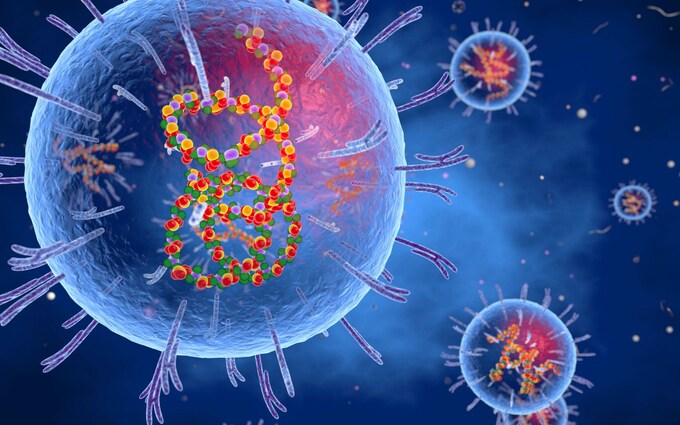
Myths Surrounding STIs
As serious as STIs are, some misconceptions go around that make them sound even more daunting or less weighty than they really are. STIs are infections that are passed from one person to another mainly through sexual contact. They are caused by different species, including bacteria, viruses and parasites.
Common Misconceptions About STIs
You can’t get STIs from other forms of sexual contact
Multiple forms of STIs can be contracted without having vaginal sex. STIs can be spread through oral sex, anal sex, toilet infections, genital contact (genital warts, herpes), saliva. They can also be spread from mother to child through child birth, breastfeeding, pregnancy and through blood transfusions and shared needles.
STIs go away on their own
Many STIs stick around without causing noticeable symptoms, and can develop into long term health complications if they are left undetected. They are capable of being transferred between sexual partners. Not all STDs are curable, but medications help to manage them.
Contraceptives shield you from getting an STI
Although condoms offer one of the most effective protections against STIs, other contraceptive methods are incapable of protecting against STIs. Spermicides have generally been believed to have the capability of killing bacteria or organisms that cause STIs, but that is not the case.
Many STIs do not present noticeable symptoms for a couple of weeks, and during this period they are capable of being transferred from an infected person to another. It’s best to get checked frequently when engaging in sexual activities with a new partner or with more than one sexual partner.
Sex Talk
Badejo had found a way to drag Tito to the clinic next to the mega-church on Ibiade Street. It was a long way from where they lived, and he was pretty confident no one would see him.
“All this suffering on top small enjoyment, this thing hurts,” Badejo winced as he spoke.
They had registered and gotten him a card, and now they were seated on one of those long wooden benches that drained your spirit the longer you sat on them.
“Na you sabi, next time if I give you condom no collect na,” Tito hissed and then broke into a smile that became a small giggle.
“They would have to chop off your dick now,” he kept a straight face when he said this.
Tito annoyed him half the time they spent together, but he was the only friend who could come here with him.
Moreover, Tito had introduced him to Shalewa.“That girl sweet o, Bade,” Tito remarked as he sucked on cherries; this was a month ago on one of those Saturday CHM 101 tutorial days. “ I even heard Fola had tasted her, Bolu and Pascal too,” he said as he spat out a seed his mouth had cleaned out.
Badejo was not like most of his friends; he had not ‘tasted’ anyone then, so he listened while they bragged.
Tito made it such that all three of them -himself, Badejo, and Shalewa walked back together to the student dorms after tutorials that day. On subsequent days, Badejo walked Shalewa back to her hostel before leaving for his, and by the end of the second week, it was her turn to pay him a visit in the off-campus residence he shared with Tito.
“Weyrey, use condom o,” Tito had warned. “You leave that one, just give me small privacy abeg,” Badejo had just one thing on his mind, and he wasn’t really thinking about condoms.
A week later, it burned when he peed, and he couldn’t bring himself to tell Tito. In another two weeks, his pee started to turn brown, and he knew he had to do something about it. So, he had dragged Tito all the way here.
“Badejo Tioluwa!” The stout nurse at the reception called out. “Yes, ma,” Badejo answered as he and Tito stood.
“Room number five,” she pointed towards one of the black doors down the hall as the boys picked up their bags and made for the room.
“Good morning, boys. You can have your seat,” the doctor smiled as she motioned them to sit across the table from her.
“So, what brings you here?”
“Erm, it hurts when I pee, and recently my pee has started to appear brown in colour,” Badejo had rehearsed this a few times that morning.
“Okay, when did the pain start?”
“Three weeks ago, ma.”
“Alright, and how old are you, Badejo?” she asked as she started to scribble something down.
“I would be nineteen in September,” he lied. Tito smiled at him reassuringly.
“Have you had sex recently?” she asked with a calmness that let him know this wasn’t her first rodeo, and he had no reason to lie.
“Yes, about a month ago,” his right hand found its way to his temples, shyly grabbing at nothing in particular.
“But it was just once o,” he felt the need to add that.
The doctor nodded; her face didn’t give away what she was thinking, or maybe she wasn’t judging him exactly.
“That’s alright.” her eyes met his, and it didn’t feel like she would scold him. “You may have contracted a sexually transmitted infection, that could happen when you have unprotected sex, regardless of how many times.”
“Did you use a condom?”
Badejo shook his head sideways in response.
“Okay, condoms are one of the best ways to prevent infections if you want to have sex.”
Badejo nodded now; he had learnt his lesson.
“Most STIs can be treated if they are diagnosed early enough, so there’s nothing to worry about.”
Tito sighed; he felt some relief for his friend.
“Take one white form on the table to room 10. Your urine sample should be collected for a test there,” the doctor smiled at him. He noticed that she wore contacts, and her blue eyes had some allure to them.
“Okay, thank you.”
“Before you go, remember to inform your partner about this, some STIs are asymptomatic in females, you should convince her to come to the clinic,” her face was stern now.
“Alright ma, I would try to,” he was not sure if he could convince Shalewa, but he would at least try.
He took one of the white forms and tapped Tito. Badejo was glad that he would be relieved and his penis wouldn’t be chopped off like Tito had teased.
AYANNUGA Olayinka
Clinical II
Sexual habits that result in STIs and prevention techniques
Yes, HIV might be one of the most widely known sexually transmitted infections; others, like chlamydia, syphilis, and gonorrhoea, are also reasonably common. Certain sexual practices increase the risk of getting an infection. This article highlights a few causal habits and prevention methods.
Well, the safest ‘sex’ practice to prevent an STI is to abstain, but sex amongst young people has increased in more recent years. Young adults between the ages of 15 – 24 record the highest occurrence of sexually transmitted infections. Other more peculiar sexual habits that result in sex-related infections and diseases will be discussed here.
Sex without condoms or other barrier-type contraceptives could easily result in STIs and even increase the risk of developing a viral disease like Human papilloma virus (HPV) or hepatitis. Pills and other intrauterine devices are not as protective as condoms.

Sexual practices that involve coercion, violence or forced sex can result in infections. It is also important to note that having multiple sex partners or serial monogamy increases the chances that a person might get infected.
Having sex under the influence of alcohol or recreational drugs influences the possibility of sexual acts that might result in infections and diseases. Alcohol lowers inhibitions, and drug influence makes individuals susceptible to forceful coercion, rape and unprotected sex.
In conclusion, while abstinence is your best bet to prevent contracting a sexual infection. It is essential to imbibe safer sexual practices to ensure that you do not get infected. Hopefully, this article has educated you on ways to keep yourself safe!
AYANNUGA Olayinka
Clinical II
CROSSWORD PUZZLE ON LASSA FEVER

| A | C | K | D | S | G | V | T |
| F | E | S | M | F | J | I | L |
| E | Q | I | R | U | M | R | A |
| V | P | R | T | S | K | U | S |
| E | V | R | N | O | L | S | S |
| R | P | A | F | R | I | C | A |
| B | R | T | O | K | J | H | N |
| T | S | P | R | E | A | D | I |
KEYWORDS:
VIRUS LASSA TRANSMIT AFRICA FEVER SPREAD RAT RISK
QUIZ ON LASSA FEVER

- QUESTION 1: What does Lassa fever do to the body?
- QUESTION 2: What causes Lassa fever virus?
- QUESTION 3: How does someone get Lassa fever?
- QUESTION 4: Is Lassa fever curable?
ANSWERS
- Lassa virus primarily targets endothelial cells which line the blood vessels, and cells of the immune system. Some individuals may show no symptom, while some show varying symptoms including fever, weakness and fatigue, headache, muscle aches, sore throat, cough, nausea, vomiting and diarrhea, abdominal pain, chest pain and bleeding.
- Lassa fever is caused by the Lassa virus. It is spread to humans through multimammate rats, found in West Africa where it is endemic.
- Lassa fever is transmitted through contact with the urine or feces of infected multimammate rats. It can also spread from person to person through direct contact with bodily fluids (such as blood, urine, feces or saliva) of infected individuals.
- There is no specific cure for Lassa fever, but early treatment with general antiviral medications can be used to treat it. Usually, the body must heal itself from the virus with nutritional and electrolyte support.
Oluwafela Oluwadamilola
STI Quiz
Although it has become less embarrassing to talk about sex and associated infections, there are still several misconceptions surrounding STIs and their transmission. The more familiar sexually transmitted diseases include HIV, syphilis, chlamydia, gonorrhoea, genital herpes, HPV and hepatitis. This short quiz assesses your knowledge of STDs and debunks previous myths and superstitions.

Answer True or False to the following to judge your knowledge of STIs.
1. STIs can only be gotten by people with multiple sexual partners. T or F?
2. If your partner has an STI, you would be able to tell. T or F?
3. All infections, including those sexually transmitted, can be treated with simple antibiotics. T or F?

4. You can get STIs from oral sex. T or F?
5. Tests for STIs are very painful. T or F?
Answers
- False. Whether it is your first time with a single partner or multiple partners, there is a risk of contracting an STI if the necessary precautions are not taken.
- False. Some STIs are asymptomatic, and there might not be visible markers to suggest that your partner is a carrier; regular tests are the best way to ensure you are infection-free.
- False. If you get infected, you should see a doctor to determine the best management plan for you.
- True. Herpes virus, gonorrhoea and chlamydia are some sexually transmissible infections that you might contract via oral sex.
- False. Most tests for STI would require a sample collection or a swab. You should not be scared to get to a nearby clinic to get tested.
-AYANNUGA Olayinka
Clinical II
LASSA FEVER; RISK AND PREVENTION

Lassa fever is an acute, animal-borne, viral disease caused by African rat species
known as multimammate (Mastomy natalensis). It’s an endemic disease in some West
African countries with Sierra Leone, Liberia, Guinea, Mali, Ghana, and Nigeria at high
risk. It was first identified in Nigeria in 1969 as the Lassa virus. The virus, with a
single-stranded RNA, belongs to the Arenaviriidae family. The cases of Lassa fever
increase yearly in Nigeria and treatment is difficult due to healthcare facilities.
Transmission and Symptoms
The mastomy rat species, when infected, excrete the virus in its urine and feces
throughout its lifetime. They can deposit the virus on the surface of utensils, walls,
medical equipment, and places where food is stored through their urine and faeces.
Transmission of the virus to humans can occur through open skin contact with infected
rat urine, consumption of rats, consumption of infected food by rats, contact with the
fluids of infected persons, and sexual intercourse.
80% of people show mild or asymptomatic symptoms with gradual general weakness,
fever, headache, and malaise, making diagnosis difficult. 20% of infected individuals
progress to chronic chest pain, deafness, and death.
Prevention
There is currently no vaccine, however, Ribavirin is used for treatment. It can be
prevented through
- Proper environmental sanitation
- Covering of dustbins
- Appropriate refuse disposal
- Storage of foods
- Elimination of rats by setting traps and using rodenticides
- Avoid blood contact with an infected person
- Sterilization of medical equipment before use
- Regular hospital checkup
Olayiwola Peter
Preclinical I
Facts About Lassa Fever

A disease that affects 100,000- 300,000 and kills 5,000 people annually can only be curbed when everyone understands the basis of the disease. How well do you know Lassa fever? Are you aware that:
◆ Transmission of Lassa fever primarily occurs through food or items
contaminated by urine or faeces of infected multimammate rats.
◆ It affects mostly West African countries because of its common host.
◆ It has been known since 1952, officially identified as Lassa virus in 1969 after
killing two Nurse missionaries in Lassa town, Borno state, Nigeria.
◆ It’s a single-stranded RNA virus belonging to the arenavirus family.
◆ Most cases happen during the dry season (November to April), primarily in
African countries, with Nigeria being the most affected.
◆ The incubation period is 1-3 weeks, and early symptoms can resemble those of
Covid-19.
◆ Sharing needles can increase transmission risk, and pregnant women in their
third trimester face a higher fatality rate.
◆ Reverse transcription -polymerase chain reaction (RT-PCR) is used for
early-stage detection, and Ribavirin is a treatment option.
◆ The virus can be transmitted through inhalation and injection.
◆ Early supportive care, rehydration, and symptomatic treatment improve survival.
◆ There’s no current vaccine.
◆ 15%-20% of hospitalized patients succumb to the illness.

Typhoid Fever: Treatment and Complications
Typhoid fever is an illness that results from infection with the Salmonella Typhi bacterium. It causes fever, and gastrointestinal symptoms like abdominal pain, vomiting, diarrhea, or constipation. Other times, infected individuals can be asymptomatic even though they can still pass the infection to others. If untreated however, typhoid fever can result in life-threatening complications in symptomatic individuals thus, it should be treated promptly. In this article, we examine the diagnosis and treatment of typhoid fever and complications of untreated typhoid infection.
Diagnosis
Diagnosis typically begins with a doctor taking a history of the illness – its duration and symptoms, and examination of the patient. Investigations help the doctor to confirm the diagnosis of typhoid fever. The culture of the patient’s stool, urine, and blood are the common investigations that are usually done. Once investigations confirm the diagnosis of typhoid fever, treatment should be commenced.
Treatment
Typhoid fever is treated with antibiotics however, severely ill patients or complicated cases will require additional treatment and probably a hospital admission. The choice of antibiotics for treatment depends on the susceptibility of the bacteria to the antibiotic. Typically, Ciprofloxacin, levofloxacin, or ofloxacin, or ceftriaxone, cefotaxime, or cefixime, or Azithromycin are routinely used. Other times, the bacteria can develop resistance to these medications, so a different antibiotic might be used.
Complications
The various complications of untreated typhoid fever include:
- 1. Intestinal perforation
- 2. Bleeding
- 3. Sepsis
- 4. Pneumonia
- 5. Meningitis
- 6. Osteomyelitis
- 7. Delirium
- 8. Death

Typhoid Fever
Typhoid fever is a disease caused by the bacteria Salmonella typhi. It is also known as enteric fever. It is usually spread through contaminated food and water, and is particularly endemic where sanitary practices are poor. It can also be passed from one person to another. The disease manifests mainly with gastrointestinal symptoms. However, serious and life-threatening complications can occur if untreated. In this article, we look at the risk factors, symptoms and prevention of typhoid fever.
Risk Factors
Typhoid fever rarely occur when water is treated to kill germs and is safe for drinking and where human waste is properly disposed. However, the following risk factors can increase the risk of infection with the disease:
- 1. Close contact with someone who is infected or has recently been infected with typhoid fever
- 2. Recent travel to a typhoid-endemic area
- 3. Poor food hygiene
- 4. Extremes of ages
- 5. Improper sewage disposal
Symptoms
The symptoms of typhoid fever begin to manifest about 2 weeks after infection with the bacteria. The symptoms of infection with salmonella typhi include:
- 1. Fever
- 2. Headache
- 3. Fatigue
- 4. Vomiting
- 5. Abdominal pain
- 6. Loss of appetite
- 7. Constipation or Diarrhea
- 8. Rash usually on the chest and stomach
However, it is possible for an individual to be infected but manifest no symptoms. These people are carriers, reservoir of infection, and can spread the infection to other people like in the case of typhoid Mary.
Prevention
Infection with salmonella Typhi can be prevented by:
- 1. Through and frequent hand washing especially before and after handling foods and after using the bathroom
- 2. Proper food hygiene including washing fruits and vegetables carefully and ensuring that all foods are well cooked
- 3. Vaccination with typhoid conjugate vaccine against typhoid fever as it provides some protection. However, it does not protect against illness but it lowers the risk
- 4. Proper sewage disposal
